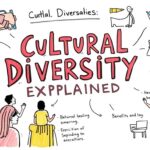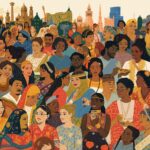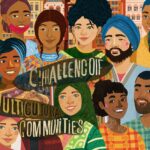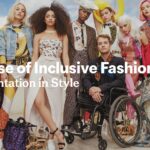We offer a wide collection of free, high-quality printable coloring pages for kids and adults. From cute animals to intricate mandalas, our designs bring creativity and relaxation to everyone. Download, print, and start coloring today!
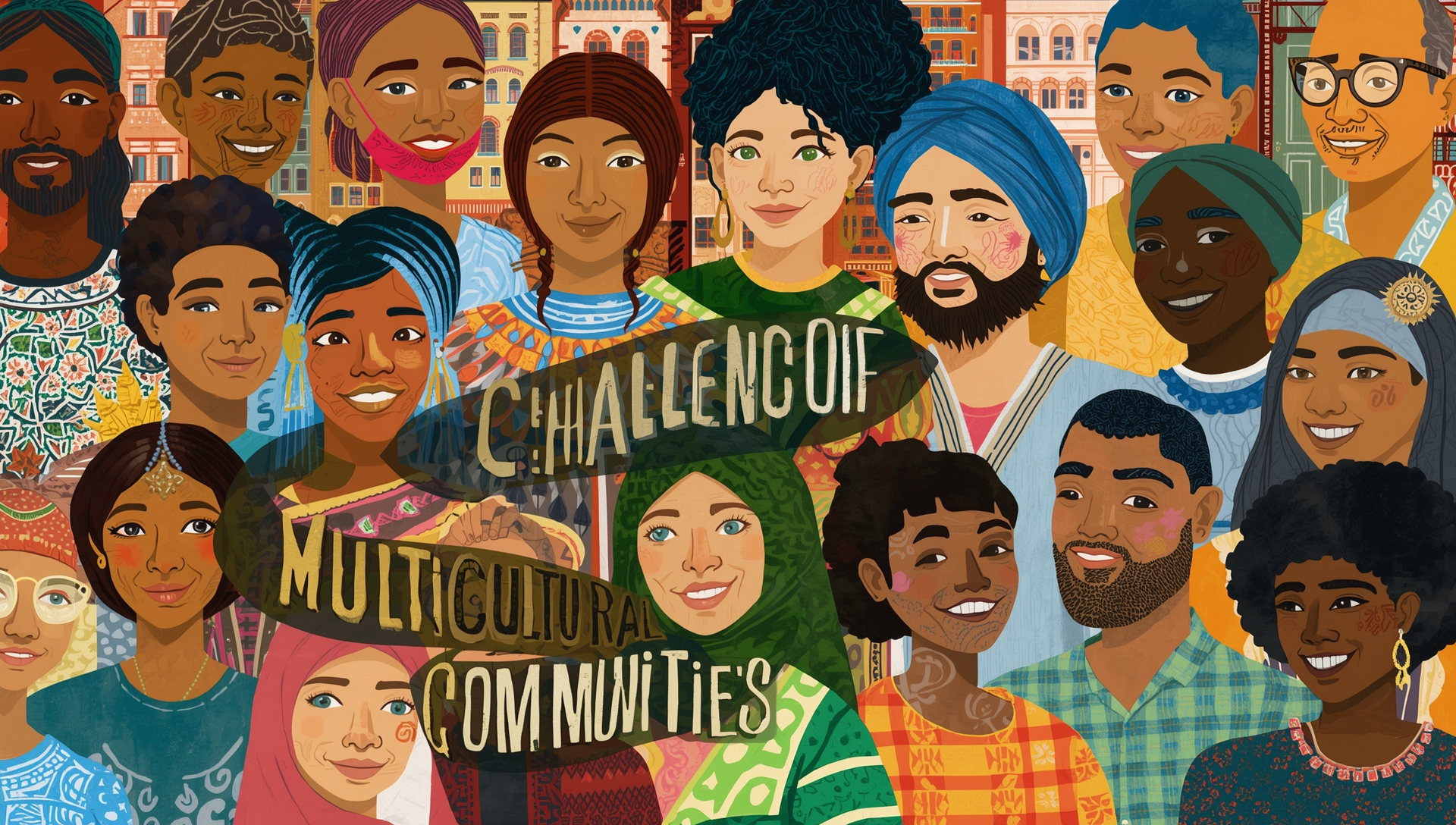
Different cultures coming together, sharing traditions, and creating something vibrant and new. But have you ever wondered what it really takes to make that happen? It’s not always easy. You might face language barriers, misunderstandings, or even resistance from people who feel unsure about change. If you want to create a colorful society where everyone feels included and valued, you need to understand these challenges first.
Keep reading to discover what obstacles you might encounter—and how you can overcome them to build a truly united community.

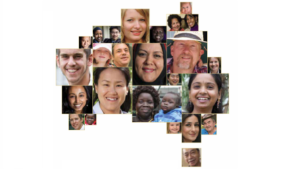
Cultural Differences
Building multicultural communities brings many rewards and challenges. One key challenge is cultural differences. These differences affect how people live, communicate, and connect. Understanding and managing cultural diversity is essential for strong social cohesion. Without this, cultural conflicts can arise, making community building hard. Language barriers, diverse customs, and value differences all play a role. Each factor impacts social integration and intercultural communication in unique ways.
Communication Barriers
Language barriers create the biggest challenge in multicultural communities. People may speak different languages or use different expressions. This can lead to misunderstandings and frustration. Clear communication is vital for social integration and community building.
- Different languages: Not everyone shares the same native language.
- Non-verbal cues: Gestures or body language may have different meanings.
- Listening skills: People may find it hard to follow fast or accented speech.
These issues reduce effective intercultural communication. Simple messages can become confusing or lost. Trust and cooperation may suffer. For example, a community meeting may feel less inclusive if translation is unavailable.
| Barrier | Effect | Solution |
|---|---|---|
| Language Differences | Misunderstandings, exclusion | Use translators, simple language |
| Non-verbal Misinterpretation | Conflicts, offense | Educate on cultural norms |
| Listening Challenges | Missed information | Speak slowly, clarify |
Strong efforts to improve communication can reduce cultural conflicts. Encouraging patience and respect helps build trust across cultures.
Diverse Traditions
Cultural traditions shape daily life and community identity. Multiculturalism challenges arise when traditions differ widely. These can affect celebrations, food, dress, and social habits. Respect for cultural traditions is key to peaceful coexistence.
Many communities celebrate holidays unique to their culture. Without awareness, this can cause confusion or exclusion among others. Food preferences and religious practices may clash in shared spaces. Understanding diverse traditions supports social cohesion.
- Festivals and holidays may overlap or conflict.
- Traditional clothing may stand out in mixed groups.
- Religious practices might require special accommodations.
Community centers often create spaces to honor multiple traditions. This encourages inclusion and respect. Teaching about various cultural traditions reduces prejudice and promotes harmony.
| Tradition | Community Impact | Integration Tip |
|---|---|---|
| Holiday Celebrations | Shared or conflicting events | Plan inclusive activities |
| Religious Practices | Needs for prayer space, diet | Provide accommodations |
| Traditional Dress | Visible cultural identity | Encourage cultural appreciation |
Conflicting Values
Value differences often cause the deepest challenges in multicultural communities. Different cultures hold unique views on family, authority, work, and social roles. These conflicts can slow social integration and increase tension.
Some cultures prioritize community and family above individual goals. Others focus on personal achievement. These contrasting values affect how people interact in schools, workplaces, and public life.
- Family roles: Expectations for elders and youth differ.
- Work ethics: Ideas about time and effort vary.
- Social behavior: Norms for respect and communication contrast.
Understanding and respecting value differences helps reduce cultural conflicts. Dialogue and education support peaceful community building. Emphasizing shared goals can unite diverse groups.
| Value Area | Example | Community Approach |
|---|---|---|
| Family Structure | Extended vs. nuclear families | Promote family-inclusive events |
| Work Attitude | Collectivism vs. individualism | Foster team collaboration |
| Respect Norms | Direct vs. indirect communication | Train in intercultural skills |

Credit: www.nst.com.my
Social Integration
Building multicultural communities is a rewarding but complex task. Social integration plays a key role in creating a harmonious and colorful society where people from different backgrounds live and work together. It involves bringing diverse cultures into one community while promoting respect and understanding. Challenges arise because of differences in language, beliefs, and customs. Overcoming these challenges requires effort in areas like trust building, combating stereotypes, and fostering inclusion. These elements support community cohesion and help create an inclusive society where everyone feels valued.
Building Trust
Trust building is the foundation of successful social integration. It allows people from different cultures to feel safe and respected. Trust grows slowly through positive interactions and honest communication. Without trust, intercultural communication becomes difficult, and misunderstandings increase.
Key steps to build trust include:
- Active listening to understand different perspectives
- Consistent actions that match words
- Creating shared goals for multicultural collaboration
- Respecting cultural values and traditions
The table below shows how trust influences community bonds:
| Trust Level | Community Impact |
|---|---|
| High | Strong cooperation and open dialogue |
| Medium | Occasional misunderstandings, but willingness to work together |
| Low | Fear, suspicion, and social divisions |
Building trust reduces barriers and supports prejudice reduction. It encourages people to share and learn from each other. Trust also creates a safe space for expressing cultural identities, vital for social integration.
Combating Stereotypes
Stereotype challenges block true understanding in multicultural communities. Stereotypes are simple ideas about groups that ignore real differences. They cause unfair judgments and hurt social bonds. Combating stereotypes helps reduce prejudice and promotes respect.
Ways to fight stereotypes include:
- Education about different cultures and histories
- Encouraging personal stories and experiences
- Promoting positive media representation
- Facilitating direct contact between groups
Intercultural communication is a powerful tool to break down stereotypes. Talking openly helps people see each other as individuals, not just as cultural labels. This improves social inclusion and supports a peaceful coexistence.
Common stereotype effects and solutions:
| Stereotype Effect | Solution |
|---|---|
| Mistrust and fear | Community workshops and dialogue sessions |
| Social isolation | Inclusive events and group activities |
| Discrimination | Clear anti-discrimination policies and enforcement |
Fostering Inclusion
Fostering inclusion means creating a community where everyone feels welcome and valued. It is essential for social integration in a multicultural setting. Inclusion supports equal opportunities and respects cultural differences. It strengthens community cohesion by encouraging participation from all groups.
Effective ways to foster inclusion:
- Providing language support and cultural orientation
- Celebrating diverse festivals and traditions
- Ensuring fair access to education and jobs
- Encouraging leadership roles for minority groups
Inclusive communities enjoy benefits such as:
- Better problem-solving through diverse ideas
- Increased social harmony
- Greater economic growth
- Enhanced well-being for all members
Fostering inclusion reduces barriers and promotes multicultural collaboration. It helps build a strong and colorful society where diversity is a strength. This effort supports lasting social integration and creates a future where everyone belongs.
Economic Factors
Building multicultural communities is a complex task that involves many challenges. One of the biggest challenges is related to economic factors. These factors greatly affect how people from different cultures live, work, and interact. Economic challenges can slow down social integration and make it harder to achieve multicultural inclusion. Understanding these economic factors is key to creating a colorful society where everyone has equitable opportunities. The following sections explore some main economic challenges: employment disparities, access to resources, and economic inequality.
Employment Disparities
Employment disparities are a major economic challenge in multicultural communities. People from different cultural backgrounds often face unequal chances of getting good jobs. This employment inequality affects social cohesion and limits economic growth.
Key issues include:
- Language barriers that reduce job opportunities for non-native speakers.
- Discrimination based on ethnicity or culture during hiring processes.
- Limited networks that affect access to job information.
These factors contribute to unemployment and underemployment among minority groups. Employers may not recognize foreign qualifications or skills, which deepens economic disparity. The table below shows common barriers and their effects on employment:
| Barrier | Effect on Employment |
|---|---|
| Language Barriers | Lower chances of job interviews and offers |
| Discrimination | Unfair hiring and promotion practices |
| Non-recognition of Skills | Underemployment and job mismatch |
| Limited Networks | Reduced access to job opportunities |
Addressing employment disparities requires cross-cultural communication and policies that promote equitable opportunities for all. This fosters stronger community building and helps reduce economic disparity.
Access To Resources
Access to resources is another challenge that affects multicultural communities. Resources include housing, education, healthcare, and social services. Unequal resource accessibility can create barriers to social integration and weaken social cohesion.
Often, minority groups face difficulties in accessing:
- Affordable and safe housing
- Quality education and training programs
- Health services that respect cultural needs
- Financial support and community services
These limits impact their ability to improve their economic status. For example, lack of education reduces job opportunities and increases employment inequality.
Communities with better resource accessibility tend to have stronger multicultural inclusion. Public policies and community programs must focus on:
- Removing language and cultural barriers in services
- Providing targeted support to vulnerable groups
- Ensuring fair distribution of public resources
Improved access to resources strengthens community building and promotes social cohesion in diverse societies.
Economic Inequality
Economic inequality is a persistent issue in multicultural communities. It refers to the uneven distribution of wealth and income among different cultural groups. This inequality hinders social integration and reduces equitable opportunities for many people.
Economic disparity shows in:
- Differences in income levels
- Variations in housing quality
- Unequal access to education and healthcare
These gaps affect the overall quality of life and limit community participation. Economic inequality can also increase tensions between groups, harming social cohesion.
Key factors behind economic inequality include:
- Historical discrimination and exclusion
- Unequal access to education and employment
- Barriers to financial services
Efforts to reduce economic inequality must focus on creating fair policies and promoting multicultural inclusion. Supporting small businesses owned by minorities and improving access to education are vital steps. Closing the economic gap leads to stronger social integration and more vibrant multicultural communities.
Political And Legal Issues
Building multicultural communities in a colorful society faces many political and legal issues. These issues shape how ethnic diversity and cultural diversity develop in a community. Laws and policies affect the social inclusion and social integration of minorities. Challenges arise in immigration policies, discrimination laws, and representation. Addressing these challenges is key to strong community cohesion and fair minority representation.
Immigration Policies
Immigration policies play a crucial role in shaping multicultural societies. Strict or unclear policies can slow immigration reform and limit cultural diversity. Many countries face challenges balancing border control with welcoming immigrants. This affects social integration and community cohesion.
Key issues in immigration policies include:
- Lengthy visa processes are causing delays
- Unequal access to work and education
- Restrictions on family reunification
- Limited support for refugees and asylum seekers
These challenges impact how well newcomers adapt and communicate across cultures. Clear, fair immigration reform supports better cross-cultural communication and stronger multicultural communities.
| Policy Aspect | Impact on Multiculturalism |
|---|---|
| Visa Processing Time | Delays reduce social integration chances |
| Work Permit Restrictions | Limits economic participation |
| Family Reunification Rules | Affects emotional and social support |
| Refugee Acceptance | Reflects community openness |
Discrimination Laws
Anti-discrimination legislation is vital for protecting cultural diversity and ethnic diversity. These laws reduce bias and create equal opportunities. Without strong discrimination laws, minorities face barriers in jobs, housing, and education. This harms social inclusion and weakens community cohesion.
Challenges with discrimination laws include:
- Lack of awareness about legal rights
- Insufficient enforcement of existing laws
- Gaps in laws covering all types of discrimination
- Resistance from some groups against anti-discrimination efforts
Strong laws need clear rules and active enforcement. Education about these laws helps improve cross-cultural communication and fairness.
| Law Factor | Effect on Social Inclusion |
|---|---|
| Legal Awareness | Empowers minorities to seek justice |
| Enforcement Strength | Ensures fair treatment |
| Coverage Scope | Protects all minority groups |
| Public Support | Encourages community acceptance |
Representation Challenges
Minority representation remains a major challenge in building inclusive multicultural communities. Lack of representation in politics, media, and leadership limits voices from diverse backgrounds. This weakens social integration and community cohesion.
Common representation challenges include:
- Underrepresentation in government bodies
- Bias in media coverage
- Limited roles for minorities in decision-making
- Barriers in education and professional growth
Improving minority representation requires policies supporting equal access and participation. This enhances cross-cultural communication and promotes multiculturalism by including all voices.
| Area | Challenge | Impact on Community |
|---|---|---|
| Politics | A few minority elected officials | Weak minority influence on laws |
| Media | Stereotypes and lack of diversity | Misunderstanding between groups |
| Leadership | Barriers to leadership roles | Excludes minority perspectives |
Education And Awareness
Building multicultural communities presents many challenges, especially in education and awareness. People from different cultures may have varied beliefs, customs, and ways of communicating. Educating community members about these differences helps reduce misunderstandings and builds respect. Awareness programs encourage people to appreciate diversity and work together peacefully. Education is the key to creating a colorful society where everyone feels included and valued.
Cultural Competency Training
Cultural competency training helps people understand and respect cultural differences. This training is important for teachers, leaders, and community members. It teaches skills to communicate effectively with people from diverse backgrounds.
Key benefits of cultural competency training:
- Improves communication across cultures
- Reduces biases and stereotypes
- Builds trust and cooperation
- Enhances problem-solving in diverse settings
Training sessions often cover topics such as:
| Topic | Description |
|---|---|
| Cultural Awareness | Understanding different cultural values and traditions. |
| Effective Communication | Learning how to listen and speak respectfully. |
| Conflict Resolution | Handling misunderstandings without offense. |
Regular training updates keep skills fresh and relevant. Everyone gains confidence to engage with diverse groups positively.
Multilingual Education
Multilingual education supports learning in more than one language. It helps children and adults feel comfortable in their native language while learning new ones. This approach strengthens identity and academic success.
Benefits of multilingual education include:
- Better understanding of subjects
- Increased cultural pride
- Improved communication skills
- Greater job opportunities
Schools and community centers can offer classes in multiple languages. These programs often include:
- Language lessons for beginners and advanced learners
- Support for parents to help children at home
- Activities that celebrate different cultures
Challenges include finding skilled teachers and resources in many languages. Still, the effort creates a welcoming environment for all community members.
Community Outreach
Community outreach connects people through events and programs. It raises awareness about cultural diversity and encourages participation. Outreach efforts bring together different groups to share experiences and learn from each other.
Effective community outreach strategies:
- Organizing cultural festivals and fairs
- Hosting workshops on diversity and inclusion
- Creating support groups for newcomers
- Using local media to spread information
Outreach programs must be accessible and inclusive. This means offering translation services and choosing easy-to-reach locations. Volunteers from various cultures help build trust and improve communication.
Strong outreach builds a sense of belonging. It encourages people to celebrate differences and work toward common goals.
Technology’s Role
Technology plays a crucial role in building multicultural communities within a colorful society. It connects people from different backgrounds, languages, and cultures. Technology helps share ideas, traditions, and values quickly and widely. Yet, it also brings challenges that affect how these communities grow and interact. Understanding technology’s role helps us see both the opportunities and the difficulties in creating strong, diverse communities.
Social Media Impact
Social media platforms like Facebook, Twitter, and Instagram have changed how multicultural communities communicate. They offer spaces to share cultural stories, celebrate diversity, and raise awareness about different issues. People can join groups, follow pages, and attend virtual events to learn about other cultures.
Benefits of social media in multicultural communities:
- Easy sharing of cultural traditions and festivals
- Connecting people across countries and languages
- Creating support networks for minority groups
- Encouraging dialogue and understanding among cultures
Still, social media can spread misunderstandings and stereotypes. Sometimes, harmful content or hate speech divides communities instead of uniting them.
| Positive Effects | Negative Effects |
|---|---|
| Promotes cultural exchange | Can spread misinformation |
| Builds global connections | May increase cultural clashes |
| Supports minority voices | Risk of online bullying |
Understanding both sides helps communities use social media wisely. It requires active moderation and respect for all voices.
Digital Divide
The digital divide means not everyone has equal access to technology. Some people lack internet, devices, or digital skills. This gap affects multicultural communities deeply. Without access, many cannot join online conversations or share their culture.
Key factors in the digital divide:
- Income differences
- Geographical location (urban vs rural)
- Age and education levels
- Language barriers
These factors limit participation in digital spaces. People without access feel isolated or ignored. It slows down the growth of inclusive multicultural communities.
Ways to reduce the digital divide:
- Provide affordable internet and devices
- Offer digital training programs in multiple languages
- Create community centers with tech access
- Develop simple, user-friendly platforms
Closing this gap helps more people join the colorful society online. It encourages equal voice and shared experiences.
Online Communities
Online communities bring multicultural groups together. They create spaces for cultural exchange, learning, and support. These communities form on forums, social networks, and messaging apps.
Features of successful online multicultural communities:
- Clear rules promoting respect and inclusion
- Moderators who understand cultural sensitivity
- Events that celebrate different cultures
- Language support tools
Online communities can overcome physical distances and cultural gaps. They allow people to express their identity and share stories freely. Still, challenges like language misunderstandings and cultural differences arise.
Managing these communities requires patience and openness. Leaders must encourage dialogue and prevent conflicts. When done well, online communities become safe places for all cultures to grow together.

Credit: www.ox.ac.uk
Frequently Asked Questions
- What Are Common Challenges In Building Multicultural Communities?
Common challenges include language barriers, cultural misunderstandings, and social integration difficulties. These issues can hinder communication and trust. Addressing them requires inclusive policies, cultural education, and community engagement to foster unity and respect among diverse groups. - How Can Cultural Differences Impact Community Cohesion?
Cultural differences may cause miscommunication and stereotypes. They can lead to exclusion or conflict if not managed well. Promoting open dialogue and cultural exchange helps build mutual understanding and strengthen community bonds. - What Strategies Help Overcome Language Barriers?
Using multilingual resources, translation services, and language classes can bridge communication gaps. Encouraging patience and active listening also improves interactions. These steps ensure all members feel heard and included. - Why Is Social Integration Vital In Multicultural Societies?
Social integration promotes equality, reduces discrimination, and enhances community wellbeing. It helps diverse members participate fully in society. Effective integration builds a peaceful and supportive environment for everyone.
Conclusion
Building multicultural communities takes effort, patience, and understanding. People must respect different cultures and listen to one another. Challenges will arise, but learning from them helps communities grow stronger. Open minds and kind hearts create a welcoming place for everyone.
Small actions make a big difference over time. Embracing diversity brings new ideas and friendships. Together, people can build a colorful society where all feel included and valued. The journey is not easy, but it is worth every step.

